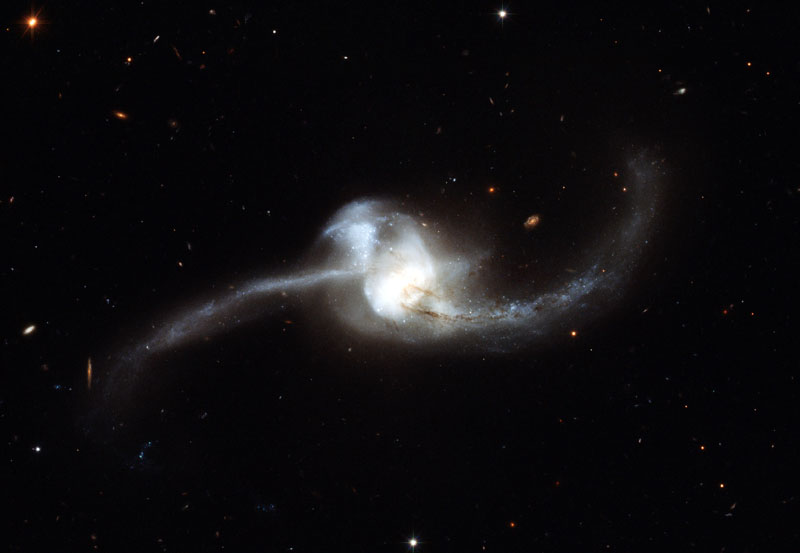The galaxy mergers can occur when two or more galaxies collide. They are the most violent type of galaxy interaction. Although galaxy merger doesn’t involve stars or system of stars in actual collision due to the vast distances between the stars in most circumstances. The gravitational interaction between galaxies and the friction between the gas and dust have major effects on the galaxies involved. The exact effect of such mergers depend on a wide variety of parameters such as collision angles, speeds, relative size and composition. This domain is an extremely active area of research. There are some generally accepted results as follows:
When one of the galaxy is significantly larger than the other, the larger will often eat the smaller absorbing most of its gases and stars with little other major effect on the larger galaxy. Milky way is thought to be currently absorbing smaller galaxies such as Canis Major dwarf galaxy and possibly the Magellanic clouds. The ‘Virgo stellar stream’ is thought to be the remains of a dwarf galaxy that has been mostly merged with the milky way.
If two spiral galaxies that are approximately the same size collide at appropriate angle and speed, they will likely merge in a fashion that drives away much of the dust and gas through a variety of feedback mechanism and often include a stage in which there are ‘active galactic nuclei’. This is thought to be the driving force behind many quasars. The final result is an elliptical galaxy.
It is expected that the Milky way and Andromeda will probably collide in about 4.5 billion years. If these galaxies merged, the result would be an elliptical galaxy.






